" My cousins were the cool kids. It was the seventies. They had skateboards and Raleigh Choppers. They had leather sofas and crazy paving and their dad drove a Jensen Interceptor. But it wasn't these totems of seventies aspiration that made "

The coolest motorcycle that was actually a plane: the X-2 Skycycle
Evel Knievel captured the public's imagination with his rocket-powered bike-plane
1974 will go down in many people’s memory as one of the great summers. The FIFA World Cup took place in West Germany with the home nation going on to lift the winner’s trophy, ABBA won the Eurovision with “Waterloo”, and around the globe young and old gathered to see whether one Evel Knievel could successfully jump Idaho’s Snake River Canyon on his fantastical Skycycle X-2.
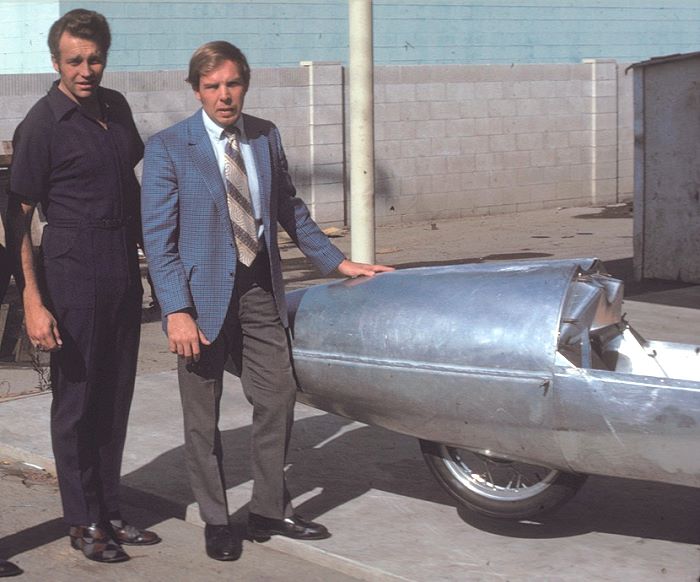
By this stage, the world already knew Evel Knievel well, his trademark stars and stripes white leather suits making him a real-world superhero to kids everywhere. Usually seen jumping rows of car or busses, it inspired a generation to get out on their BMXs, making ramshackle ramps from whatever wood they could salvage. There was no such thing as health and safety then. Simpler times.
Not one to rest on his laurels, Knievel planned the mother of all jumps; a three-quarter of a mile gap across a canyon. Such a feat required something more than his trademark Harley-Davidson. For this, Evel would ride what would go on to be known as the X-1 Skycycle.
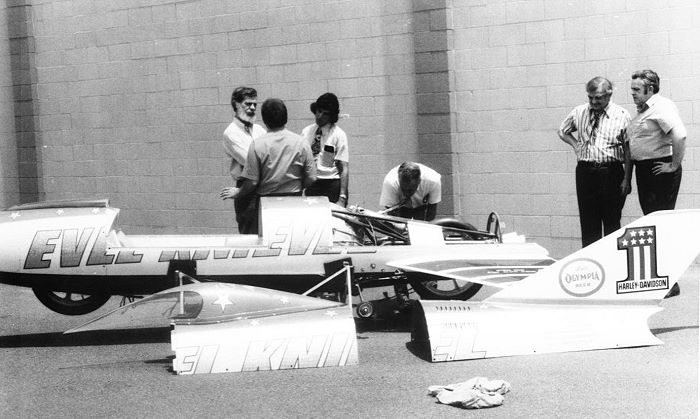
Knievel enlisted the talents of Doug Malewicki, a talented designer and engineer who along with Robert Traux, a U.S. Navy engineer, set about devising a way to create a vehicle with the potential to clear such a distance. The first prototype was called the X-1 Skycycle, and while it may have had two wheels, it was far from resembling a motorcycle. In reality, this was, according to Malewicki, “a two-wheeled, streamlined, fin stabilised rocket”. The wheels enabled it to roll smoothly along its launch ramp before entering flight over the canyon.
For Knievel to gain enough speed in what was a short launch run, the X-1 Skycycle would need to be rocket-powered. Rather than using a chemical fuel mix, the Skycycle was steam powered. One of the benefits of doing this was an increased safety factor. While exposure to highly pressurised steam can be dangerous, it remains relatively safe to store.
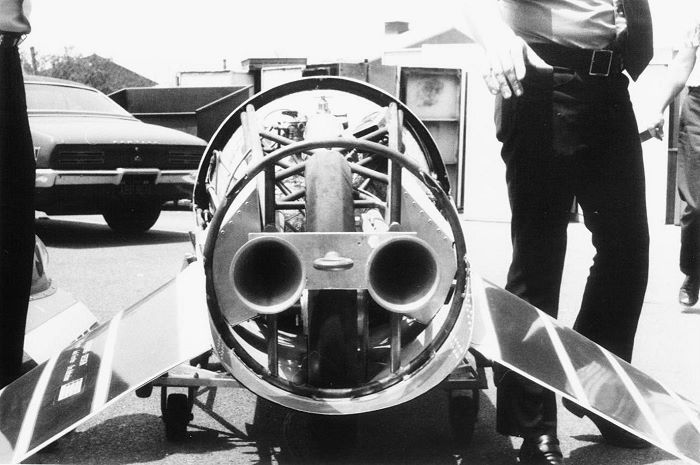
Located behind the cockpit was what appeared to be a shiny round metallic vessel. It was constructed from titanium and lined with layers of fibreglass and aluminium foil for insulation. This tank would be charged with steam from a boiler beside the launch ramp and was capable of containing 200 pounds of superheated steam held at around 700 degrees.
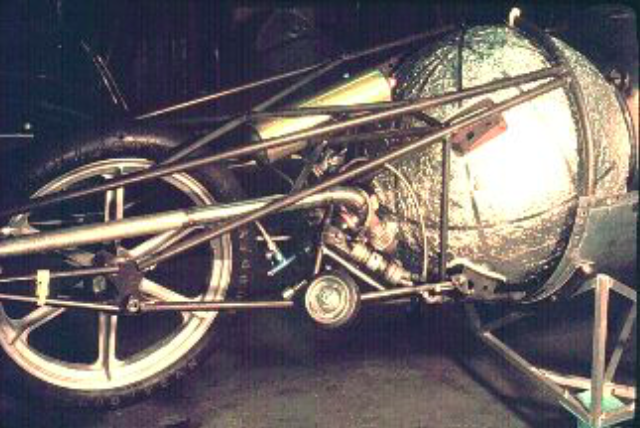
Upon launch this would be released through a main propellant valve and out of the nozzle, proving the forward propulsion at speeds of up to 400 miles per hour. It would be enough to provide the X-1 Skycycle with 1,333 pounds of thrust over a total of 6 seconds, sending it to a height of almost 2,000 feet.
When the finished X-1 Skycycle had its public unveiling, it looked capable of not only sending Knievel across the canyon but into space. This contraption was, essentially, a rocket with an enclosed cockpit integrated into it. Naturally, it bore the blue, white and red colours with Evel Knievel emblazoned down the side in gold lettering. It was around 13 feet long in total and weighed around 370kg.
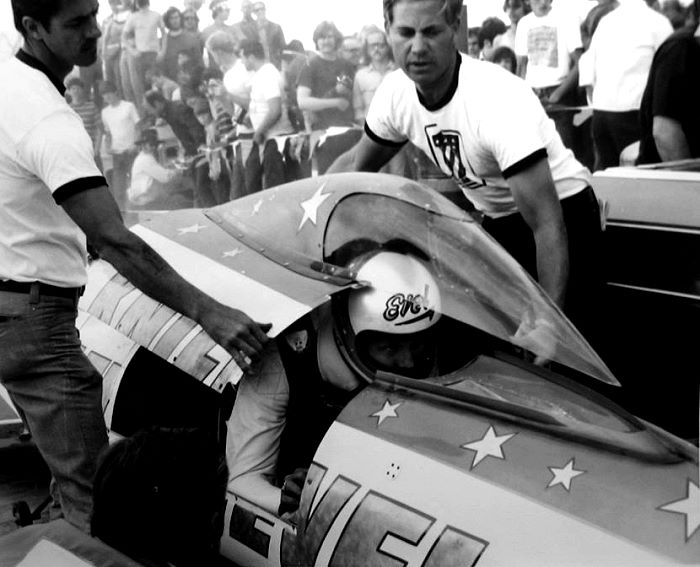
Despite enlisting the use of computer programmers to help calculate optimal trajectories both the first and second attempts, which were unmanned, saw X-1 Skycycles plunge to the canyon floor, each falling someway short of the required distance.
With money running out and pressure mounting, Knievel felt he had no choice but to use the third for his manned attempt. With various modifications made to the design, the now-titled X-2 Skycycle was set up for the record attempt. It was registered as an airplane according to Federal Aviation Administration records, and while Knievel wasn’t required to log a flight plan ahead of the attempt, the FAA did impose a 5-mile radius and 3,900-feet no-fly zone around the jump site on the day of the attempt.
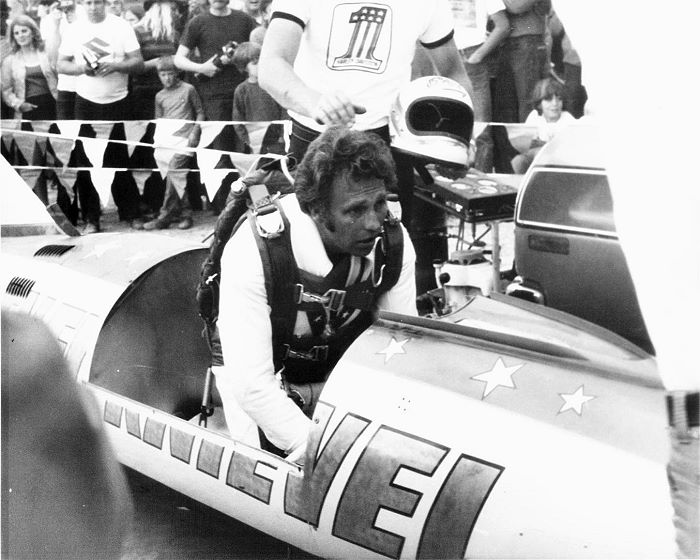
As Knievel was being strapped into the X-2 Skycycle, thousands had gathered around the canyon, while across the nation viewers tuned into the live television broadcast. With the signal given the rocket fired and Knievel shot skywards. However, a glitch during the start sequence had resulted in the parachute system deploying prematurely, causing Knievel in the X-2 to fail to reach the desired height and begin to drift down to the canyon floor. The daredevil struggled to undo his belts in an attempt to escape before the Skycycle crashed into the canyon face. It hit the canyon around 70 feet up before coming to rest just short of the water’s edge. Evel suffered only minor injuries, some of which he had inflicted during his attempt to free himself.
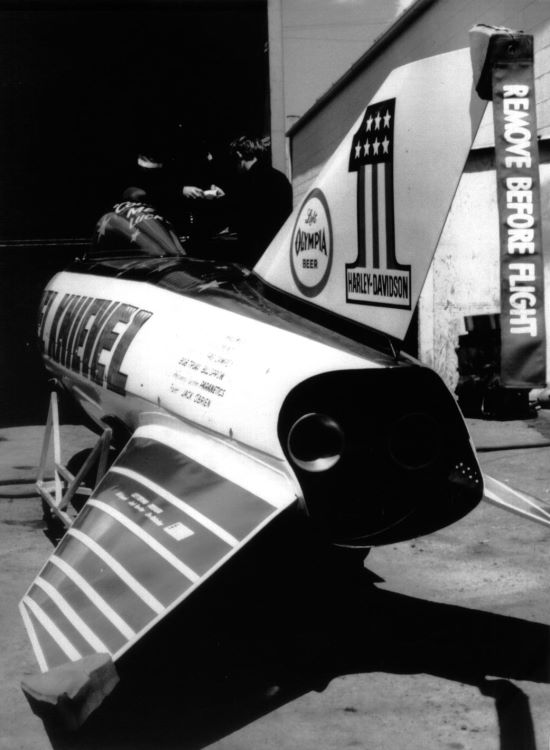
While the X-2 Skycycle and the Snake River Canyon jump went down as a failure, it still captured the attention the world for a sunny day in September and ensured its place in the history of daredevil record attempts.
CLICK TO ENLARGE










